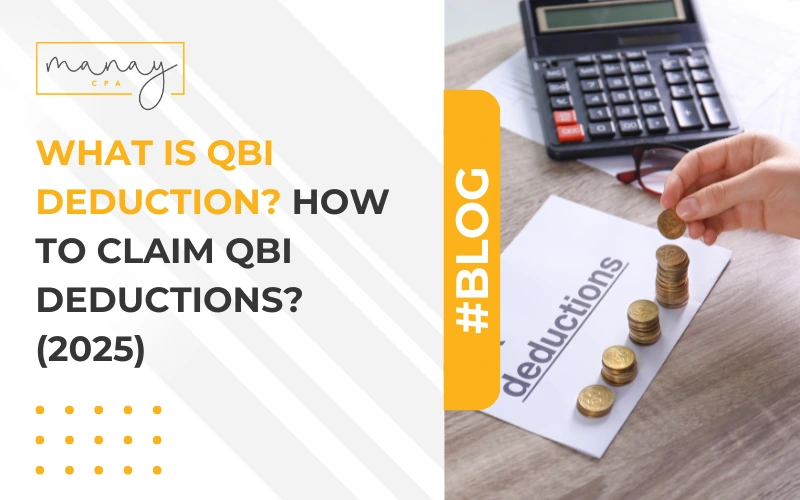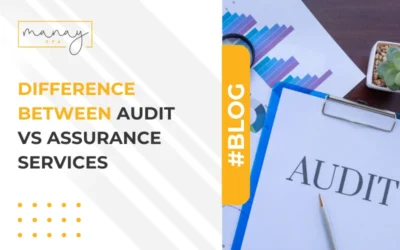What Is QBI Deduction? How to Claim QBI Deductions? (2025)

As a business owner, there are many ways to save on taxes. One such option is a tax deduction called the Qualified Business Income (QBI) that was introduced in 2017 by the Tax Cuts and Jobs Act (TCJA). Though eligible taxpayers can reduce up to 20% of their taxable business income, the rules are complex. This guide will explain all about QBI, who is eligible, and how taxpayers can make the most of this rule.
Table of Contents
ToggleWhat is the QBI Deduction?
The QBI deduction, also called the Section 199A deduction, is available for self-employed individuals, small business owners, and others who receive income through pass-through entities. This deduction is available in addition to the standard deduction.
What Does QBI Stand For?
QBI stands for Qualified Business Income and includes all income earned through trade or business. However, it does not apply to capital gains, income earned outside the U.S., and wages paid to employees.
Origins of the QBI Deduction (TCJA 2017)
The QBI was introduced by the Tax Cuts and Jobs Act (TCJA), 2017 to provide tax breaks for small business owners and shareholders of pass-through entities, who are not eligible for the corporate tax cuts. This provision was at first set to expire in 2025, however, the One Big Beautiful Bill Act (OBBBA), passed in July 2025, made the QBI deduction permanent.
Who Qualifies for the QBI Deduction?
The QBI eligibility is complex and requires a clear understanding of what constitutes business income. The eligibility largely depends on the type of business entity from a taxation standpoint and the nature of services offered.
Eligible Business Types for QBI Deduction
QBI deduction is available for income earned through sole proprietorships, partnerships, estates and trusts, LLCs, and S-Corps. However, it does not apply to incomes earned from a C-Corp or as a W-2 employee.
Income Limits and Thresholds for 2025
This deduction is available for those individuals whose taxable income is up to $197,300 or single taxpayers and $394,600 for joint filers. For taxpayers beyond this upper limit, the fully-limited QBI deduction applies, to a maximum cap of $247,300 for single taxpayers and $494,600 for joint filers.
Specified Service Trades or Businesses (SSTBs) Explained
An SSTB includes services offered in the following fields:
- Healthcare
- Law
- Accounting
- Actuarial science
- Performing arts
- Consulting
- Athletics
- Financial services
- Investing and investment management
- Trading or dealing in specified assets.
When one or more of the above services are the primary income of a business, and when the income depends on the skills and reputation of the individual in this space, it constitutes an SSTB.
How to Calculate Your QBI Deduction
Calculating your QBI deduction is complex, but a rule of thumb is that it must be directly attributable to your trade or business that’s being conducted in the United States. It includes qualified items of income, gain, deduction, and loss from businesses.
Determine Your Qualified Business Income
To determine if an item qualifies as QBI, make sure it fulfills the following conditions:
- Connected to a business conducted in the United States.
- It must be a general business income, deductible tax on self-employment, healthcare premiums, qualified retirement plans, unreimbursed partnership expenses, and expenses for buying stock in a partnership or S-Corp.
- It must not be a W-2 wage, qualified PTP income or loss, commodities transaction, annuity, income from working capital, reasonable compensation from an S-Corp, or capital gains.
Apply the 20% Deduction
Once you determine the total QBI, apply the 20% deduction to it. For example, if your total QBI comes to $100,000, you can deduct $20,000. The remaining $80,000 is taxable.
Factor in W-2 Wages and Qualified Property
While computing W-2, make sure it is directly allocable to QBI and includes all wages paid to employees, including 401(k) contributions. However, don’t include payments to statutory employees. The deduction can be 50% of W-2 wages paid by the business or 25% of W-2 wages plus 2.5% of unadjusted qualified property.
Apply Income Thresholds and Phaseouts
You are fully eligible for QBI deduction if your income is less than $197,300 for single taxpayers and $394,600 for joint filers. After that, the QBI gets phased out, and the percentage decreases to 75% of the extra amount.
For example, suppose you are a single business owner with a taxable income of $210,000 and $30,000 in Qualified Business Income (QBI). The 2025 single-filer threshold is approximately $197,300, and the phase-out range is $50,000. This means your “excess” income is $12,700 ($210,000 – $197,300). Dividing $12,700 by the $50,000 range gives a 25.4% phase-out percentage. For a Specified Service Trade or Business (SSTB), this percentage reduces your QBI before calculating the deduction. Your adjusted QBI is therefore $30,000 × (1 – 0.254) ≈ $22,380, and your QBI deduction is 20% of that amount — about $4,476.
If your income exceeds $247,300 as a single taxpayer and $494,600 as a joint filer, you no longer become eligible for QBI.
Common Limitations and Exceptions
While QBI has been beneficial to small business owners, there are also multiple limitations to it. Understanding these limitations and exceptions can help you plan better.
High-Income Taxpayers and the Phase-Out Rule
Those who earn more than the limits mentioned above are not eligible for QBI. This means you will have to look for alternative tax planning strategies.
Treatment of Multiple Businesses
Taxpayers with multiple businesses must calculate the QBI for each business. Though losses from one business can be used to offset the other, there are strict rules that must be followed to optimize the deductions and avoid penalties from the IRS.
Negative QBI or Business Losses
If you incur a business loss or if your QBi is negative, you cannot claim a deduction in that year. However, you have the option to carry it forward and reduce the QBI of future years. You can carry forward this loss indefinitely and offset it against positive QBIs until the losses are fully absorbed. Only after that can you claim a QBI deduction.
How to Claim the QBI Deduction on Your Tax Return?
Calculating the QBI and claiming it on your tax return involves multiple steps. This process can be overwhelming for those doing it for the first time, and in such cases, take professional help.
Forms Needed for QBI Deduction
You must mention your QBI across different IRS forms. The following forms must be used for reporting your QBI
Form 1040
Form 1040 is used for reporting the individual income tax. Mention the QBI amount on line 13 of this form.
Schedule C
Schedule C is the form used by sole proprietors to report business income. The amount mentioned in this form is used as the input for QBI calculations.
Form 8995 / 8995-A
Form 8995-A is used to specify the details of your QBI. It has four schedules, namely;
- Schedule A – SSTBs.
- Schedule B – Aggregation of business operations.
- Schedule C – Loss netting and carry forward.
- Schedule D – Special rules for patrons of agricultural or horticultural cooperatives.
Reporting QBI for Partnerships and S Corporations
S-Corporations and partnerships that have elected to become pass-through entities must use the Schedule K-1 form to provide information about QBI to owners. This form must include details, like QBI, qualified property, and W-2 wages. Using this information, individuals can compute their income tax.
QBI Deduction and Pass-Through Entities
Pass-through entities are S-Corps, partnerships, and LLCs that have chosen to allow the business profits to pass through to the individual owners’ personal income tax, instead of being taxed at the business level.
The Role of Schedule K-1 in QBI Reporting
Schedule K-1 is the form given to owners by these pass-through entities. It provides information about QBI in Box 20, and information about W-2 wages and qualified property in Statement A. Using this information, owners can compute their income tax.
Aggregation Rules: When and Why to Combine Businesses
Aggregating income from multiple businesses can allow taxpayers to claim a higher deduction. However, this aggregation must be subject to the IRS rules. They must be from businesses where the owner has a 50% stake, belong to the same tax year, and have similar services or shared functions.
QBI Deduction for Real Estate Investors
Real estate investors can qualify for the QBI deduction if their rental activity meets the IRS definition of a trade or business under IRC §162, or qualifies under the IRS Safe Harbor for Rental Real Estate (Rev. Proc. 2019-38). If eligible, you may deduct up to 20% of your qualified business income from the rental activity. QBI excludes certain types of income, such as capital gains and qualified dividends.
Do Rental Properties Qualify for the Deduction?
Yes, rental properties qualify for a deduction, provided there is a regular and continuous involvement with the property. Also, you must be running the business with the intent to make a profit. You can also aggregate multiple properties to maximize your deduction amount.
Safe Harbor Rules for Rental Real Estate
Safe harbor rules lay down the conditions under which interests in rental real estate can be treated as trade for claiming QBI. These rules are:
- Separate books must be maintained.
- If the property has been in existence for less than four years, 250+ rental hours of service must have been performed in a year. For more than four years, 250+ hours are necessary for three out of the last five years.
- A detailed record of hours performed must be maintained.
QBI Deduction for Self-Employed Individuals
Self-employed individuals like sole proprietors, contractors, and freelancers are eligible for QBI, provided they meet the IRS conditions. Also, their income must be below the specified limits.
Income Reporting Tips for Freelancers and Contractors
Freelancers and contractors must track income and expenses carefully, backed by clear records. It’s important to separate personal and business finances for better compliance. Follow the above-mentioned forms to calculate and file your QBI.
Handling Business Expenses to Maximize QBI
As QBI is net income, it’s important to understand that more expenses equate to lower QBI. Though you must deduct all legitimate expenses, you can maximize QBI with strategic expense planning. It’s a good idea to take help from professionals to manage these expenses and increase QBI, resulting in lower taxes.
Mistakes to Avoid When Claiming the QBI Deduction
Since QBI is complicated to calculate, it can lead to many mistakes. More importantly, you can miss out on key benefits, thereby increasing your tax liability. Some common mistakes are:
Misclassifying Income or Business Type
Note that not all income is eligible for the 20% deduction under QBI. Specifically, passive investment income, capital gains, salary earned as a W-2 employee, wages from a C-Corp, capital gains, and income from foreign businesses do not qualify for QBI. Misclassifying them can lead to IRS penalties.
Ignoring Aggregation Opportunities
If adding irrelevant incomes can lead to penalties, you can also miss out on aggregation opportunities, which offer excellent tax benefits. Knowing the rules related to aggregation can maximize your QBI and tax savings.
Failing to Use the Correct Form (8995 vs. 8995-A)
Another common mistake is to use the wrong form. For example, Form 8995 is used if income is below threshold limits, as it is simpler with fewer fields. If your income exceeds $197,300 and $394,600, respectively, use Form 8995-A, as it is more detailed.
Should You Work with a Tax Professional?
Given the financial benefits that come from QBI and the likely chances of missing out on them due to QBI’s complicated computations, working with a tax professional can be helpful.
Benefits of Expert Guidance in Complex Situations
QBI intersects across multiple areas, and it can get complex if you have multiple businesses or have an active interest across rental properties. Even small missteps can result in lost deductions or even audit risk in the worst-case scenario. Working with a tax professional reduces these mistakes and helps optimize your tax strategy.
How Manay CPA Helps Clients Maximize the QBI Deduction
Manay CPA is an experienced and expert tax consultation firm that works with individuals and businesses to complete the correct form to get the QBI deductions. Its professionals are well-aware of the existing rules, and they stay on top of the changing guidelines to ensure that you can leverage the latest provisions to maximize your tax savings.
Conclusion
To conclude, QBI is a unique benefit offered under TCJA to help individuals and small business owners claim tax benefits, as they are not eligible to enjoy the corporate tax cuts. However, the calculation of QBI is complicated because there are many rules related to what qualifies as business income. This is where it helps to tap into the expertise of Manay CPA, as they work with you to maximize your QBI deductions and reduce overall tax liability.
Contact Manay CPA for QBI deductions.
✅ Frequently Asked Questions (FAQ)
Where is the QBI deduction on Form 1040?
It appears on Line 13 under the “Qualified Business Income Deduction”
Do lawyers qualify for QBI deduction?
Yes, lawyers fall under SSTB, and hence qualify for QBI deduction, provided their taxable income is below the QBI and phase-out limits.
Is QBI always 20%?
No. The deduction is up to 20%, and it depends on income, business type, and other factors. It’s important to note that some high-income earners may get no benefit at all from QBI.
Is the QBI deduction phased out?
Yes, the QBI is phased out for taxpayers whose income exceeds the mentioned limits.
Is QBI deducted from AGI?
No, QBI is calculated after the Adjusted Gross Income (AGI), and hence appears as a separate item on Form 1040.
Does 1099 NEC income qualify for QBI deduction?
Yes, provided the income is from self-employment or contracting. Also, this amount must be reported on Schedule C for it to be eligible as QBI.
Which factors limit the QBI component of QBI deduction?
QBI deductions are unavailable or limited if income exceeds the phase-out limit, business losses, SSTB status, and W-2 wages.
Summarize the blog with Artificial Intelligence (AI):
Published on: 14 August 2025
Last updated on: 14 August 2025
Manay CPA is a reputable, full-service CPA firm based in Atlanta, Georgia. Founded in 2001, we provide comprehensive accounting and tax solutions to individuals and businesses across all 50 states.





